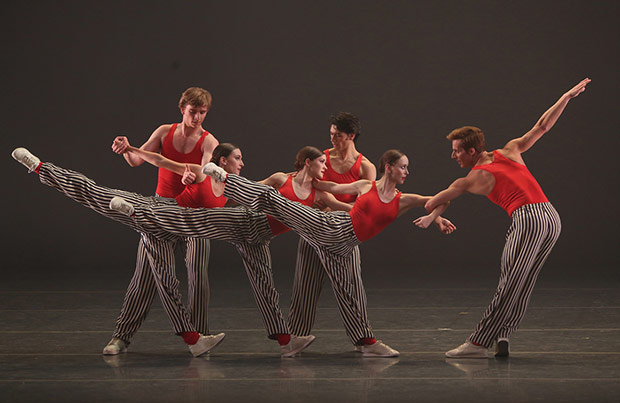
© Marty Sohl. (Click image for larger version)
American Ballet Theatre
Tharp Trio: The Brahms-Haydn Variations, Deuce Coupe, In the Upper Room
★★★★✰
New York, Metropolitan Opera House
30 May 2019
www.abt.org
www.metopera.org
Tharpiana
At the end of the opening night of American Ballet Theatre’s “Tharp Trio,” on May 30, the diminutive Tharp, wearing what looked like black leather trousers, came onstage and hugged the cast of her 1986 work In the Upper Room repeatedly. The affection was mutual; the dancers seemed thrilled, even electrified by her presence, as was the audience, which lingered for a lengthy ovation. Ever the rebel, even at 77, Tharp rejected the enormous bouquet that was offered, and eventually tossed it into the orchestra pit. Forget those antiquated balletic conventions! There was a strong sense of New York communal feeling in the house. Tharp is a wholly American artist who got her start at a nearly mythical time in American dance (the seventies and eighties). Her dances, and her persona, celebrate freedom of movement, athleticism, sex appeal, empowerment.
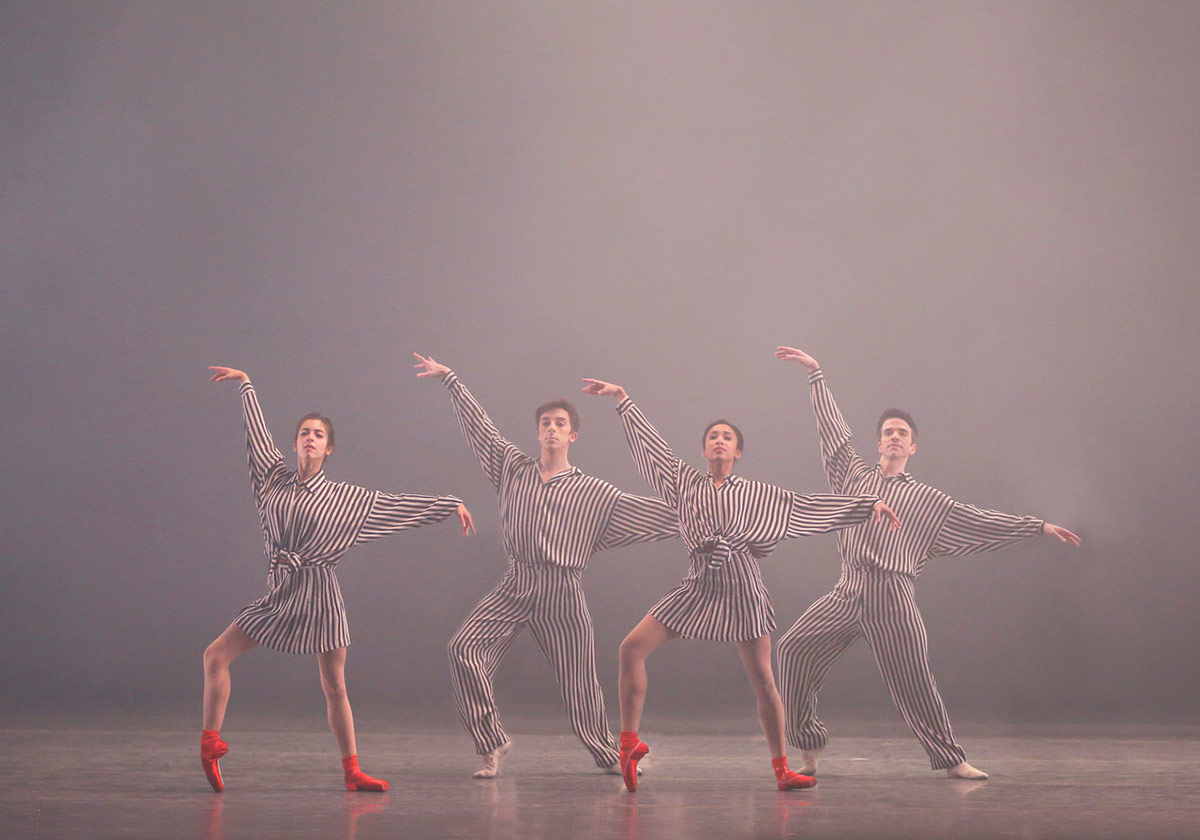
© Marty Sohl. (Click image for larger version)
The night consisted of three works, the oldest of which, Deuce Coupe (1973), is perhaps the first example of the “crossover ballet,” i.e. a work in which ballet is mixed with American popular dance forms and music. It was the middle piece in an evening that opened with the coolly neoclassical Brahms-Haydn Variations (2000) and closed with In the Upper Room, a staple of the company’s repertory. Deuce, a company premiere, was originally made for a combination of dancers from the Joffrey Ballet and Tharp’s own ensemble. A dancer in white (here, Christine Shevchenko) goes through a long series of steps from the classical canon, from arabesque to temps de cuisse, as other dancers walk, shimmy, and sashay around her in a mix of high heels, leather-soled shoes and, later, pointe shoes. All this, to the songs of the Beach Boys. Eventually, the two worlds begin to merge. The cool American kids adopt ballet steps and the pristine ballet dancer loosens up a bit. Tharp creates a new dance form: a hybrid, free-spirited derivation of ballet. And a kind of dance nirvana is achieved.
Dance nirvana is a concept that returns often in Tharp’s ballets; it’s there in Brahms-Haydn, in those gorgeous floods of dancers creating radiant classical geometries accessorized with relaxed shakes of the head, crouches, sensual partnering. And also in Upper Room, where full-throttle energy and exhaustion create a sense of camaraderie among the dancers, without which they might not survive. This is dance as exultation, and the dancers respond with joy and devotion. As exhausting as the program is, you get the feeling they would willingly do it all over again, just for another taste of that high.
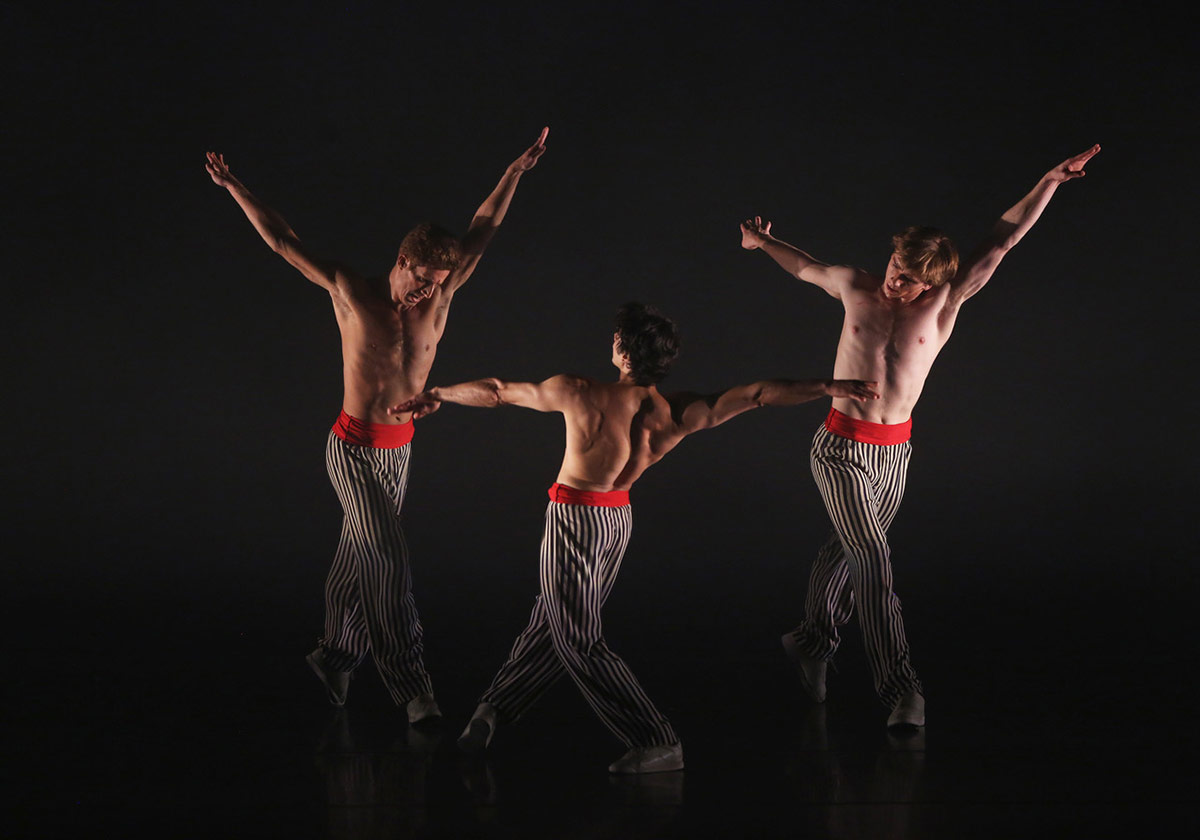
© Marty Sohl. (Click image for larger version)
The trickiest of the three works, perhaps because it is the most vernacular and the least familiar, is Deuce Coupe. It also looks the most dated; the concept of contrasting two dance styles now feels artificial, and the bell bottoms and graffiti backdrop, recreated here by Santo Loquasto, are right on the edge of caricature.
The dancers (in Deuce Coupe) don’t yet look completely comfortable in the loosey-goosey way of using the upper body, or with dancing in high heels. The slides across the stage are tentative. That is, with a few exceptions: both Misty Copeland and Catherine Hurlin, among the women, look completely at ease and in their element – more than that, they’re clearly having a ball. Among the men, Aran Bell stands out, both here and in Upper Room; he doesn’t do anything extra, just dances with a kind of all-American gravity of purpose, and it’s perfect. Copeland is riveting in the sexy slow number “Got to Know the Woman,” swishing her red skirt like a temptress next to the self-contained ballerina. As the ballerina, Shevchenko is quietly luminous.
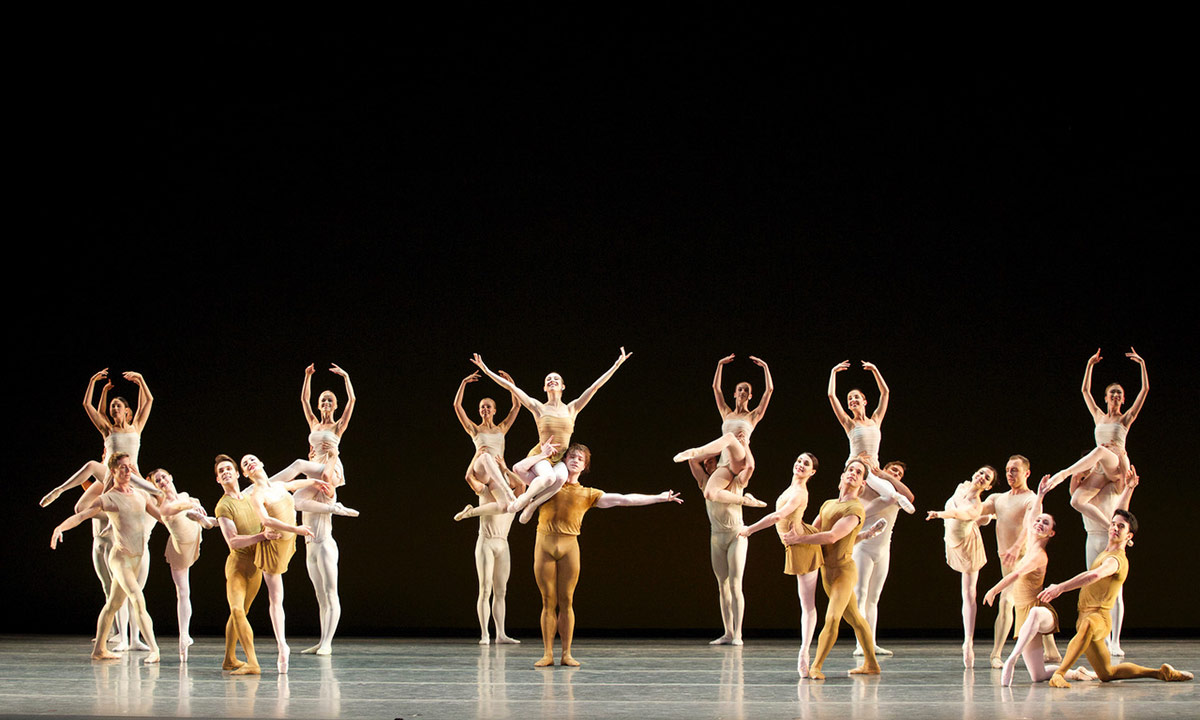
© Marty Sohl. (Click image for larger version)
Brahms-Haydn, which the company brought back in 2015, has settled beautifully on the dancers. Despite its formal brilliance, the ballet, set to a series of variations on a theme, has a seductive “easy does it” feel. Upper bodies sway, a dancer (Stephanie Williams) straddles her partner and then climbs over him, playfully but also with a touch of sensuality. A large corps of dancers in white comes and goes, complementing the patterns of the already large principal cast (7 couples). Here, Tharp revels in the classical vocabulary and the duet form. (Almost all the featured sections are for pairs of two.) I’m partial to a section in which the dancers simply chassé in diagonals across the floor while trumpets blare, triumphantly elevating what in reality is one of the simplest classroom steps.
And then there is the epic finale of In the Upper Room, in which the dancers, in their still-stylish 1980’s stripes by Norma Kamali, cavort, karate-kick, cheerlead, and stomp through billowing clouds of smoke (lighting by Jennifer Tipton), driven by the relentless electronica of Philip Glass. Thirty years after its creation, it is still the ultimate Twyla Tharp piece, an expression of American dynamism and New York style. It never gets old.












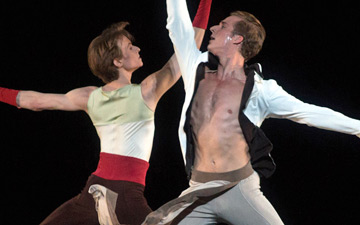
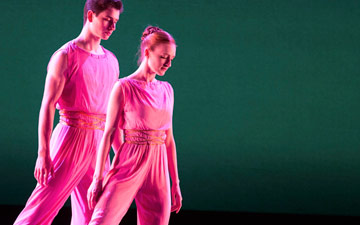
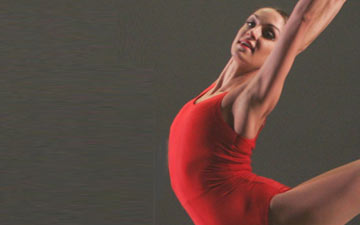

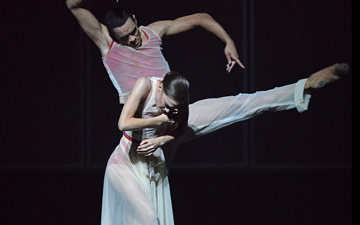
You must be logged in to post a comment.